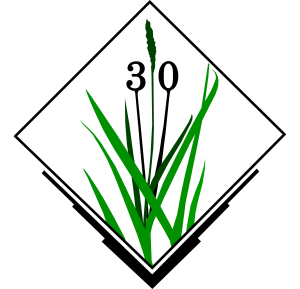30 years of GRASS GIS development
30 years of GRASS GIS development
Press release
29 July 2013
Today marks 30 years of GRASS GIS development
Today the Free Software community celebrates the 30th birthday of GRASS GIS! GRASS (Geographic Resources Analysis Support System) is a free and open source Geographic Information System (GIS) software suite used for geospatial data management and analysis, image processing, graphics and map production, spatial modeling, and 3D visualization. GRASS GIS is currently used in academic and commercial settings around the world, as well as by many governmental agencies and environmental consulting companies. GRASS GIS can be used either as a stand-alone application or as backend for other software packages such as QGIS and R geostatistics. It is a founding member of the Open Source Geospatial Foundation (OSGeo) and can be freely downloaded at https://grass.osgeo.org/download/software/.

Brief history
In 1982, under the direction of Bill Goran at the U.S. Army Corps of
Engineers Construction Engineering Research Laboratory (CERL), two GIS
development efforts were undertaken. First, Lloyd Van Warren, a
University of Illinois engineering student, began development on a new
computer program that allowed analysis of mapped data. Second, Jim
Westervelt (CERL) developed a GIS package called "LAGRID – the
Landscape Architecture Gridcell analysis system" as his master’s
thesis. Thirty years ago, on 29 July 1983, the user manual for this new
system titled "GIS Version 1 Reference Manual" was first published
by J. Westervelt and M. O'Shea. With the technical guidance of Michael
Shapiro (CERL), the software continued its development at the U.S. Army
Corps of Engineers Construction Engineering Research Laboratory
(USA/CERL) in Champaign, Illinois; and after further expansion version
1.0 was released in 1985 under the name Geographic Resources Analysis
Support System (GRASS). The GRASS GIS community was established the
same year with the first annual user meeting and the launch of GRASSnet,
one of the internet’s early mailing lists. The user community expanded
to a larger audience in 1991 with the "Grasshopper" mailing list and
the introduction of the World Wide Web. The users' and programmers'
mailing lists archives for these early years are still available
online.
In the mid 1990s the development transferred from USA/CERL to The Open
GRASS Consortium (a group who would later generalize to become today’s
Open Geospatial Consortium -- the
OGC). The project coordination
eventually shifted to the international development team made up of
governmental and academic researchers and university scientists.
Reflecting this shift to a project run by the users, for the users, in
1999 GRASS GIS was released under the terms of the GNU General Public
License (GPL). A detailed history of GRASS GIS can be found at
https://grass.osgeo.org/history/.
Since these early days GRASS development has progressed and grown, adjusting with and often at the forefront of new technologies as they became available. Today GRASS’s software development is maintained by a team of domain experts as visualized in this beautiful new video animation which stylistically details the codebase evolution and modifications from 1999 through to 2013, up to and including the latest GRASS GIS 6.4.3 stable release.
30 years of active growth: where are we now?
Recent versions of GRASS GIS come with exciting new features like:
- A new modern graphical user interface complete with integrated workflow-wizards and interactive tools,
- A new Python interface to the core C geoprocessing libraries, permitting Python developers to create powerful new modules in a quick and simple way,
- Fully-fledged topological vector support for editing and tools for topological analysis and data cleaning,
- Hundreds of new modules to analyze raster and vector data of all scales and types, with hundreds more contributed in an active community repository,
- Support for massive data processing (e.g. relevant for LiDAR processing) and Large File Support (> 2GB, 64-bit files on 32-bit systems),
- A codebase portable to all of today’s major Operating Systems,
- Installed on everything from low-power dataloggers and field laptops to high performance Grid Engines and TOP500 supercomputers.
GRASS GIS is currently developed by a global team of around twenty core programmers, plus numerous add-on contributors, testers, and translators. Overall, more than seventy core developers have worked on the code in the past thirty years, making over fifty-thousand modifications to the code. All the while, hundreds more have provided peer review and improvements to algorithms and documentation while using GRASS GIS in professional, educational, and research contexts.
Where to next?
Development on GRASS GIS continues with as much energy and interest as ever. Version 6.4.3 has been released as a birthday present. Parallel to the long-term maintenance of the GRASS 6 stable series, effort is well underway on the new cutting-edge major release, GRASS GIS 7, bringing with it many new features, modules, enhancements, and cleanups. As in the past, the GRASS GIS community is open to any contribution, be it in the form of programming, documentation, testing, financial sponsorship or any other form of support.
--
*https://grass.osgeo.org/
*M. Neteler (GRASS GIS PSC Chair) and GRASS
Development Team